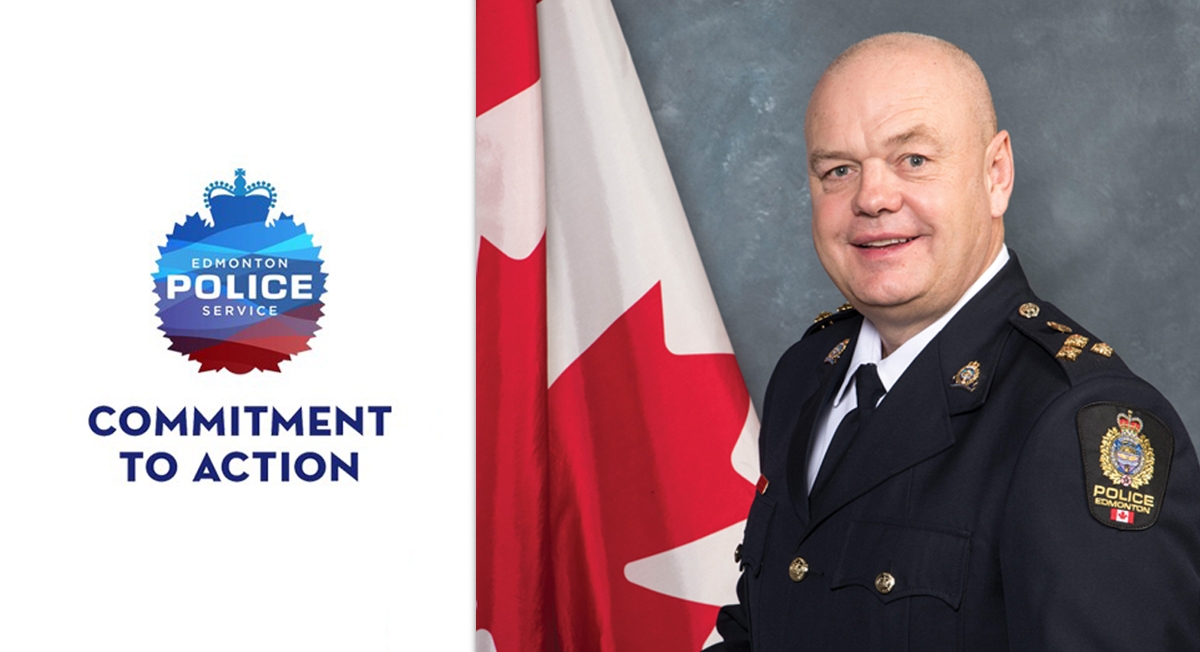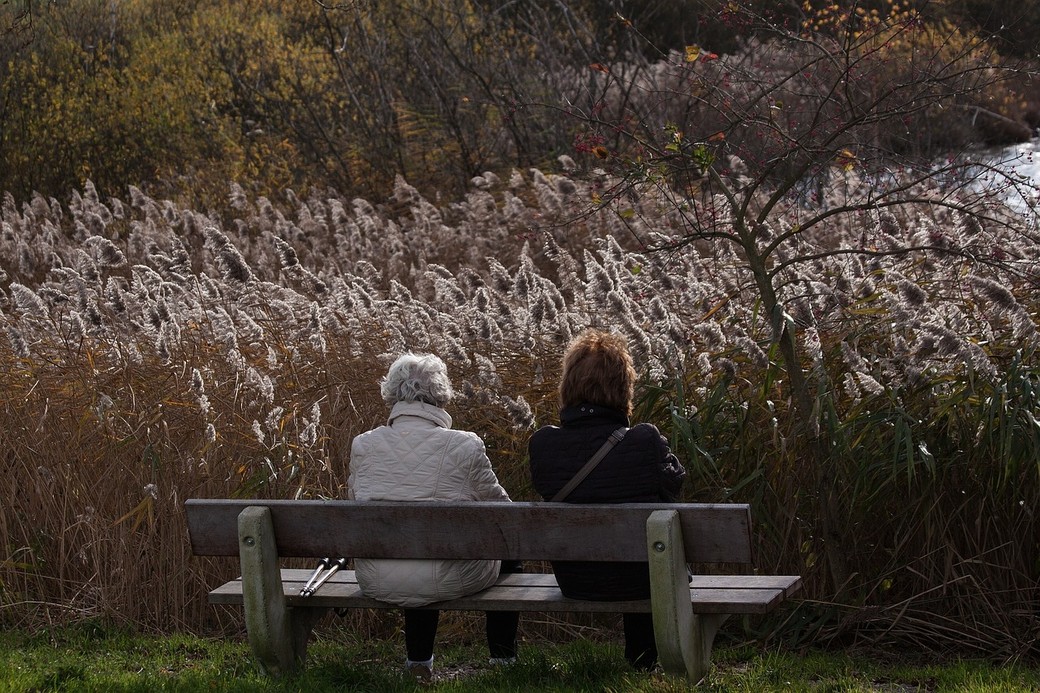
Is it time to reinvent policing? Edmonton Chief of Police Dale McFee thinks so.
The numbers tell the story. A report published in August 2020 by the Ontario Human Rights Commission (OHRC) found that while Black people comprise 8.8 per cent of Toronto’s overall population, they represent almost 32 per cent of people charged by Toronto police. The numbers are based on the Toronto Police Service’s own data compiled between 2013 and 2017. They confirm what the city’s Black community already knew, informed by a much higher profile statistic in which its members are 20 times more likely to be killed by police than White people. The shockwave that ripples through communities and families as a result are more disturbing with every incident, and the residual trauma and fear reframes the police as enemies of the very citizens they swear “To Serve and Protect.”
Toronto mayor John Tory released a package of sweeping reforms last August, the day after the OHRC report was made public. It outlined more than 80 recommendations to address systemic racism within Toronto Police Service. Is it time for police services to reinvent themselves? Edmonton’s Chief of Police Dale McFee thinks so, and he’s already initiated bold action that goes well beyond more recommendations and studies.
Dale McFee was sworn in as Edmonton’s 23rd Chief of Police in February 2019, following 26 years as a police officer in Prince Albert, Saskatchewan, where he served as Chief for nine years. McFee was also Deputy Minister of Corrections and Policing in the Ministry of Justice for the Saskatchewan government, and from 2011 to 2014 served as president and past president of the Canadian Association of Chiefs of Police. He has lectured nationally and internationally on the topics of leadership and change management in private and public sector organizations.
Following the shocking news of the death of George Floyd in Minneapolis, protests erupted in the U.S., Canada and around the world. Edmonton saw 10,000 people peacefully march at the Alberta Legislature calling for change. On September 21, 2020, Chief McFee responded with a speech whose details could be considered a model of change for police services across the country. He announced an action plan at Edmonton Police Service (EPS) that draws upon ongoing rank-and-file involvement with community leaders, declaring that “we are not launching a study. We are not launching a commission or a task force. We’re not writing a 30 to 90 day report. This is a perpetual commitment to evolve the way we relate and work with our community, particular Indigenous, Black, racialized, and other marginalized communities who typically find themselves to be the victims of an inequitable system.”
Chief McFee takes a very scientific, research-driven approach to improving police services in a city with one of the highest crime rates in the country. McFee knows the importance of data, having deep experience as a deputy minister with a background in policing and corrections as well as steering the transformational change file for the entire Saskatchewan government. A culture of transformation was already in place when McFee arrived on the job in Edmonton, so job one was to get the job done. He felt fortunate to have a police commission that was committed to change, so he did his homework.
“Part of my hiring condition was to get some external staff to prep me for office,” McFee says. “A small team did between 60 and 70 interviews with officers and civilians, looking for any kind of change momentum. If an issue is mentioned 20 or more times, then you need immediate action. If it’s mentioned five times, then it’s a theme that needs study, if it’s mentioned once then it’s probably not something to be addressed in the first 90 days.”
With data in hand, a team was chosen by the EPS membership to draft Vision 2020, a blueprint for transformational success. Two key individuals at the civilian executive director and the inspector superintendent levels drove that change overseen by the deputy chief. “That got us the buy-in and renewed momentum with new information to continue what was well underway,” McFee says. “Simply put, there are only two things that matter. Reduce the intake into the system, and make sure every off-ramp works,” McFee explains. “What’s an off-ramp? Mental health, child welfare, addictions, and housing services, so what we focus on is to get the data and technology in place quickly to figure out exactly what we’re trying to fix.”
A large portion of a police officer’s day is spent dealing with things that do not directly involve the justice system. Homelessness, addiction, and mental health issues are examples of challenges for which an officer is not fully equipped or trained to address; hence, the need for an interagency hub model. “I arrived when a hub model was being implemented,” says Chief McFee. “Build the right team, put the right people together. If you’re not seeing improvements, then you probably don’t have the right people in the room.”
Direct community engagement is also an essential component of EPS reform. One example is the Nîsohkamâkewin Council, so named for the Cree word meaning ‘the act of helping.’ A large Indigenous population, both within its urban boundary and surroundings, means Edmonton police, perhaps more acutely than in many other Canadian cities, must seek cooperative solutions for the inequities and barriers Indigenous peoples face. EPS is doing just that with the formation of this Indigenous advisory council. Community members are invited to apply for the council to develop systemic changes to policing and implement the best practices to address long-standing challenges.
“We’ve heard many stories from the National Inquiry into Missing and Murdered Indigenous Women and Girls. So many inquests tell us that we need to be a lot better at sharing information,” McFee says. “This council brings direct representation from the Cree community to give us guidance and direction. I’m not forming another study, that’s been done plenty of times. We’ve committed to action.”
The Nîsohkamâkewin Council is just one of 50 different community councils representing Edmonton’s diversity. Action means EPS is going into those communities to listen. It’s an aggressive agenda to fan out and meet with all 50 groups over the coming months to exchange knowledge. For example, a know-your-rights campaign is being developed to provide information to the Indigenous population, as well as to immigrant community groups whose members may have come from countries where policing and individual rights and freedoms are viewed very differently than here in Canada.
“It’s one thing go into a community and tell them top-down what they need to do,” McFee says. “It’s another to stand by their side with the research and the data to drive sustainable change.” This approach turns the model on its head. Every community listening session is followed by a de-briefing to determine what happens next. “We’ve already taken action with peer intervention training, community recruiting, etc. I want our recruits to spend time in vulnerable sectors like homeless shelters to learn the issues first-hand and understand those individuals and the trauma they’re facing.”
Officers face danger every day that they go home to their families. Some days they don’t make it home. Calgary Sgt. Andrew Harnett pulled over an SUV on New Year's Eve and was hit and dragged when the vehicle took off. He died about an hour later, leaving behind a wife and unborn child. Two young men have been charged with first-degree murder. Harnett was a former military police officer with the Canadian Forces accustomed to random and unpredictable danger.
Crime statistics warn officers of heightened danger and weapons possession in what are often racialized communities and neighbourhoods. This is crucial information to officer safety, but only training can prevent these statistics from turning to racial profiling. “I hope to bring civilians in to review officer training with us in an advisory capacity,” McFee says. “We’ve introduced a comprehensive social police training program, including such topics as Indigenous historical trauma training and many others. Bringing in civilians makes for ongoing and sustainable improvements and oversight.”
Calls to defund the police rear up with every new incident and every new report. The defunding demand is more punitive that pragmatic, so McFee again emphasizes that policing must adopt a team approach to dealing with underlying societal issues or one-on-one encounters that, for example, involve mental illness. While the idea of defunding police may send chills through the general population, Chief McFee stresses that “moving money around agencies won’t solve a darn thing. Social services are already funded 7-to-1 when compared with police funding.” Change must come from within police operations. EPS has already hired 10 social workers, and is aiming for 24/7 Police and Crisis teams and the placement of mental health crisis experts into its dispatch centre. “It all starts with that first call,” McFee says.
That urgent first call requires an urgent response, but McFee believes policing is much more effective in the long term if it works to deter the second, the third, and the fourth call involving the same individual. That is where police influence versus police legal authority is most effective in a community context. “Community safety and well-being involves way more than policing, that’s where our influence can bring others to the table to get results and outcomes. That’s been the biggest shift in Edmonton,” McFee says.
Innovative thinking at EPS has shifted $28 million to a bureau called Community Safety and Wellbeing, which comes with a Deputy Chief at the top. The Bureau is focused on partnering with the right agencies to get the right outcomes.
In another nod to innovation, an EPS research excellence division informs a community solutions accelerator that works with private-sector partners to prototype and deploy solutions to reduce crime. The Edmonton Police Foundation has partnered with Telus, Motorola, ATB Financial, University of Alberta, and others to come up with answers. Here’s one challenge: tackle 9,600 liquor store robberies last year alone.
Research revealed there were two reasons behind these thefts and robberies: supporting an individual’s habit, and illegal re-sale by gangs. EPS worked with one of Alberta’s largest liquor suppliers and put out a community challenge for a solution. The winner out of 220 entries from around the world was the MacEwan University Social Innovation Institute based right in Edmonton.
The MacEwan concept was twofold: identify the point of resale as the most effective point to deter thefts, resulting in lose of market, and; combine a high-profile awareness campaign, hidden tracking devices, and a whistle-blower cash prize for restaurant employees who tip off police about establishments buying stolen liquor. Challenges are being issued for creative and scientific solutions to a wide range of problems to reduce crime and intake into the justice system.
A core tactic of advocacy is the use of extreme language. Everything is a crisis and an emergency. Defund! Repeat that over and over and over. A side effect of this tactic is the deliberate occultation of all things positive. Thousands of police officers go to work every day with the honourable intention to ensure public safety. Only the bad ones make the news. My father was a police officer who took disability leave and early retirement due to a stress-related illness. About that same time, my oldest friend became an RCMP officer at the age of 19 and was assigned to northern BC, about as far away from home as a posting could place him. He suffers from extreme PTSD and has been hospitalized many times. Bottom line: policing is one of the most difficult professions in our society. So what about mental health support for officers themselves?
“That’s a great question,” Chief McFee acknowledges.” EPS has bolstered its Employee Family Assistance Program with 10 staff members supporting the organization. Forteen different programs include mental health awareness, critical stress management, suicide prevention, a chaplaincy, and a re-integration program for injured officers. “We also have an internationally recognized re-integration program that works in the short term with officers involved in major incidents like shootings, fatalities, officer assaults, plus we go deeper with a longer-term component to prevent PTSD and other risks,” McFee says. “This is all going to be doubly important during COVID. It’s a strategy that has been adopted by 25 other police agencies across Canada, which is something we're pretty proud of.”
Ottawa Police Service (OPS) is struggling with its own challenges. Fifteen officers are on paid suspension for criminal misconduct, there is an outside Ontario Civilian Police Commission (OCPC) investigation into multiple charges and allegations of sexual assault by OPS officers, and Ottawa Deputy Chief Uday Jaswal has been suspended with pay since March 21, 2020 after OCPC charged him with sexually harassing and assaulting a female civilian police employee. He faces a total of six charges from multiple complaints by OPS employees.
Ottawa Police HQ sports a large banner facing the Queensway. It is a recruitment poster featuring two good-looking officers with pearly teeth: a Black male and a blonde female. All OPS recruitment branding would make the CBC diversity police proud. What is less front-facing is the OPS plan to address policing relative to racial inequity and diversity in the community it serves. Minority communities continue to express concern over multiple cases related to police misconduct. The Ottawa Police Services Board has paid over $20 million in damages, settlements and legal fees over the past decade to victims of police misconduct.
Ottawa Mayor Jim Watson says that he is committed to police reform. Chief Dale McFee is writing the book on police reform in Canada. Watson, OPS, and the Police Board would be well served by reading it.








